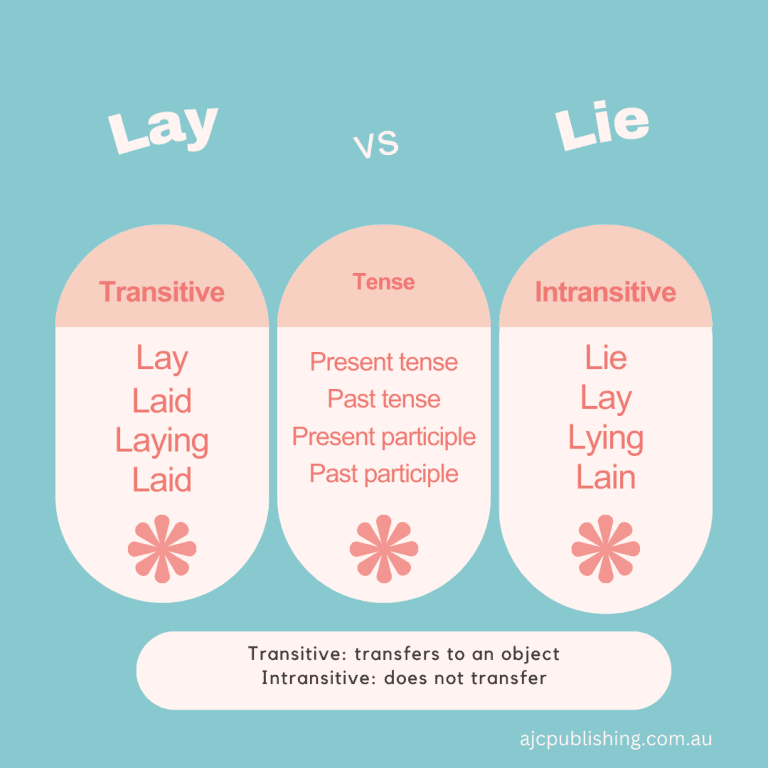
Lay laid or lie?
So confusing right? Believe it or not, even editors have to occasionally double check themselves on this. It seems to be something that just won’t stick in our heads. So how to remember?
I have a little saying that helps me:
Humans don't lay eggs
Let me explain. The most common error occurring with this set of verbs is the misuse of “lay”. This is because the verb is both transitive (the action transfers to an object) and intransitive (the action doesn’t transfer) AND “lay” is used in both present and past tense.
Example:
Incorrect: I like to lay in the sun.
How do I know this is incorrect? When used in the present tense, lay needs an object. So I ask myself, am I laying something? Am I a chicken? Nope. Therefore, I don’t lay (eggs) in the sun.
I do, however like to lie in the sun.
Let's look at all the verbs in this group
Lay, laid, and lie are often confused due to their similar spellings and pronunciations. Here are their definitions and some examples of how they’re used.
Intransitive
Lie: present tense, intransitive.
This verb is the present tense version of the intransitive “lay”, and, therefore, means to recline or be in a horizontal position. Because this verb is intransitive, it does not need an object
- I like to lie on the couch and relax after a long day.
- Our ginger cat lies in the sun all day.
- Pappa is lying down in his room.
- Back then, my cat would lie on my pillow and make me sneeze.
Lay: past tense, intransitive
Again, this verb means to rest or recline.
- As I prepared the picnic, Mila lay on the grass watching the clouds drift by.
- He had lain injured for hours before he was found.
- Instead of laying about all day, he was forced to become productive.
Transitive
Lay: present tense, transitive
Here, this verb means to put something down or place it in a specific location. It is a transitive verb, which means it requires a direct object (the action is transferred to something).
- Chickens and other birds lay eggs.
- Please lay the book on the table.
- Shauna is laying the table for dinner.
Laid: past tense, transitive
This verb is the past tense of transitive “lay” so needs an object. It means the action was completed in the past.
- She laid the flowers on the counter.
- My chickens laid plenty of eggs yesterday.
- He had already laid the foundations for the new building.